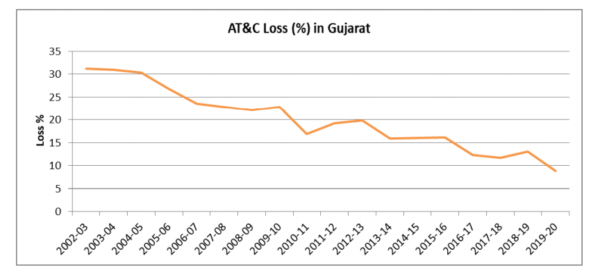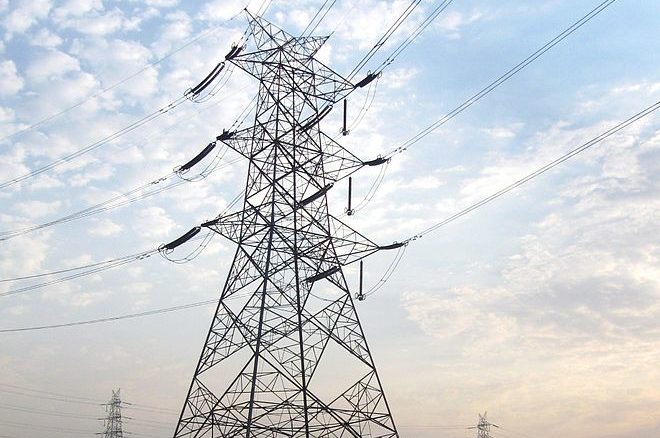Gujarat utilities’ aggregate technical and commercial (AT&C) loss for 2019-20 stood at 8.86%, substantially lower than the all-India average of 19.01%. The state has seen a huge reduction in transmission and distribution (T&D) losses since 2002-03 when the figure stood as high as 30%–according to a research report by The Energy and Resources Institute (TERI) that details the state’s transformation in the electricity sector.
The state Discoms’ revenue collection efficiency, including in rural areas, is close to 100%, as per the report.
The report authors attribute the electricity sector’s turnaround to wide-ranging steps undertaken by the state government starting around 2003.

The unbundling of the erstwhile Gujarat Electricity Board (GEB) into multiple agencies, focusing on generation, transmission, and distribution, led to a significant lowering of T&D losses, lowered the cost of supply, and ensured technical improvements. Such steps resulted in considerable growth in revenues and, eventually, cash flows for the state government.
The focused reform included steps such as process strengthening, administrative initiatives, network strengthening, and redesign.
To reduce line losses, the state adopted a combination of measures such as implementing technology, strict measures to check theft and pilferage, strengthening the distribution grid network, and changing operational processes and procedures.
The steps to address the theft and pilferage of electricity included segregation of feeders for agricultural use and a stringent anti-theft policy.
As part of the governance framework, audit committees/cells were set up and feeder managers were appointed to monitor the losses and take appropriate action. Aerial bunched cables were employed to reduce the instances of power theft by unauthorized connections.
These comprehensive measures led to a huge reduction of around 25% in T&D losses in five years, from 31.24% in 2002–03 to 22.81% in 2007.
The losses have further reduced since, and currently, the average for the four state-owned distribution companies stands at 8.86%.
As of December 31, 2019, the state had achieved 100% metering at the feeder and distribution transformer levels in both urban and rural areas.
This content is protected by copyright and may not be reused. If you want to cooperate with us and would like to reuse some of our content, please contact: editors@pv-magazine.com.









By submitting this form you agree to pv magazine using your data for the purposes of publishing your comment.
Your personal data will only be disclosed or otherwise transmitted to third parties for the purposes of spam filtering or if this is necessary for technical maintenance of the website. Any other transfer to third parties will not take place unless this is justified on the basis of applicable data protection regulations or if pv magazine is legally obliged to do so.
You may revoke this consent at any time with effect for the future, in which case your personal data will be deleted immediately. Otherwise, your data will be deleted if pv magazine has processed your request or the purpose of data storage is fulfilled.
Further information on data privacy can be found in our Data Protection Policy.